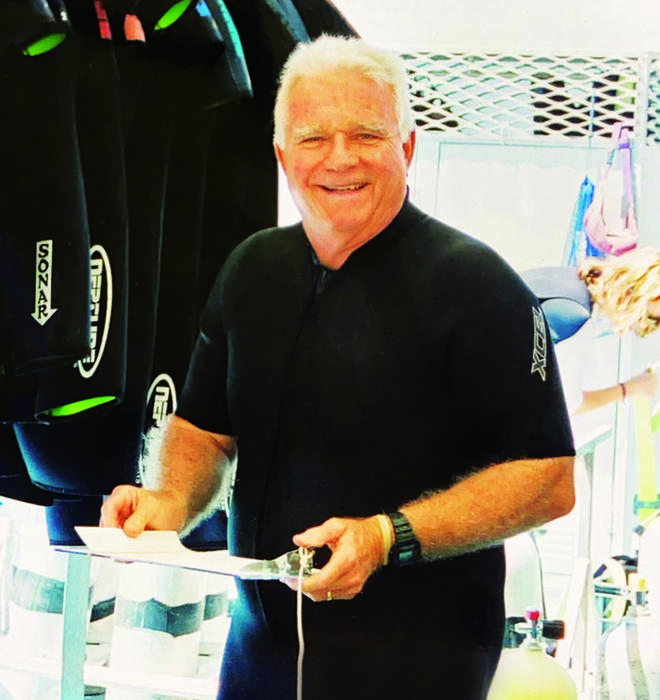
Jan. 26, 1931 — Feb. 21, 2022
Ernst “Ernie” Reese ’53, an environmental conservationist, animal lover, and avid scuba diver, knew how to rock the boat and make waves to get what he wanted.
Despite being born in Wisconsin, he felt most at home on and in the ocean, where he could study hermit crabs and butterflyfish in their habitats, and even in the 1960s, he deeply understood the importance of protecting the fragile underwater ecosystems.
“He was one of those people who was probably ahead of their time in terms of understanding what we were doing to the environment as a human society on a global scale,” says Michael Crosby, a friend and mentee of Reese’s as well as president and CEO of Mote Marine Laboratory & Aquarium. “And he understood the importance of science to help us gain a greater understanding of these ecosystems, of these habitats, of these organisms, and how they all fit together.”
After receiving his bachelor’s degree in biology from Princeton and serving in the U.S. Army — where he was a first lieutenant and executive officer in Austria — he earned his doctorate in zoology from UCLA in 1960. He then received a fellowship offer from the University of Hawaii (UH) and jumped at the chance to relocate to the state where he lived the rest of his life.
As one of the first ecologists in Hawaii, he often met resistance to his environmental advocacy efforts.
“He was one of those people that was probably ahead of their time in terms of understanding what we were doing to the environment as a human society on a global scale.”
— Michael Crosby, President and CEO, Mote Marine Laboratory & Aquarium
At the time, Hawaii wasn’t very well developed. Officials looking to build up infrastructure around Kaneohe Bay, where Reese lived with his wife, Ilze, wanted to dump sewage into the nearest waterways, but Reese wasn’t afraid to rattle cages and testify about the potential negative impacts.
Despite one developer who threatened Reese’s job, Reese was “just ticked off at the shortsightedness and the smallness of the minds of these developers. And he just braved it through,” says Ilze.
The sewage plan was eventually dropped.
Reese pursued activist efforts across Hawaii and at times even involved his UH students. In one instance, after noticing a correlation between increased human development and a decrease in fish life at Hanauma Bay, Reese and his students documented the number of people visiting the bay and their activities. The group then presented its findings to the state legislature, which eventually led to the site’s designation as the first marine life conservation district in the area in 1967. A plaque still stands there today recognizing the efforts of Reese and others.
In 1975, Reese was elected president of the Animal Behavior Society, and from 1985 to 1986 he was president of the Hawaii Academy of Science. In 2002, after almost 40 years as a faculty member in UH’s zoology department, he retired.
“He certainly was a moving force,” says Ilze, who is now 83 years old.
Aside from the ocean, Reese loved football (he regularly attended the Pro Bowl in Hawaii and was a diehard Green Bay Packers fan), travel, skiing, and his family; he and Ilze have three children and seven grandchildren.
At his memorial, several former students spoke about his all-encompassing support and ability to overcome adversity.
They would go to Reese for advice after being told “no” by others, according to Reese’s daughter, Tessa McFarland, but Reese wouldn’t let that stop his students. “My dad said, ‘Yes, you can. Here’s the plan.’”
Julie Bonette is PAW’s writer/assistant editor.






No responses yet